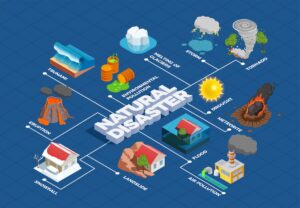As technology continues to advance, the ways in which humans interact with machines are evolving dramatically. One of the most transformative areas of innovation lies in the realm of communication between humans and machines. The traditional interfaces of keyboards, mice, and touchscreens are giving way to more natural and intuitive methods of interaction. From voice assistants like Siri and Alexa to advanced conversational AI systems that can carry on human-like dialogues, the landscape of communication with machines is rapidly expanding.
This article explores how machines are powering communication, the technologies that enable this evolution, and the potential impacts on various industries.
At the heart of enabling machines to communicate effectively with humans is Natural Language Processing (NLP). NLP is a branch of AI that focuses on enabling machines to understand, interpret, and generate human language. It involves a combination of linguistics, computer science, and machine learning algorithms that allow machines to analyze and process language in a way that mimics human comprehension.
Advancements in NLP have led to the development of systems capable of understanding not just individual words, but the context, meaning, and intent behind them. NLP tools are capable of:
- Text analysis: Understanding documents, extracting meaningful information, and summarizing text.
- Sentiment analysis: Determining the emotional tone behind words or phrases, helping machines understand human sentiment in communication.
- Speech recognition: Converting spoken language into text, enabling machines to understand voice commands.
- Language translation: Real-time translation of speech or text from one language to another.
NLP has been a crucial technology behind chatbots, virtual assistants, and automated customer service systems that allow businesses to streamline their communication with customers and provide round-the-clock support.
One of the most visible examples of machines empowering communication is the rise of voice assistants. These AI-powered systems use speech recognition and NLP to understand spoken commands and respond with natural, human-like language. Voice assistants like Amazon’s Alexa, Apple’s Siri, and Google Assistant are now part of everyday life, powering everything from smart home devices to mobile applications.
1. Voice as a Primary Interface
The convenience of voice-based communication with machines has led to a rapid adoption of voice assistants. In fact, the global voice assistant market is expected to grow substantially, driven by their integration into consumer devices and enterprise applications. This shift toward voice interfaces reflects a broader trend of making technology more accessible and user-friendly. Speaking to a machine feels more natural than typing on a keyboard, and users can interact hands-free, making it ideal for multitasking.
Voice assistants also serve as a bridge for individuals with disabilities, enabling them to interact with technology using only their voice. For instance, voice assistants can help individuals with limited mobility operate smart devices, navigate the internet, or access information quickly.
2. Smart Home Integration
Voice assistants have seamlessly integrated with smart home devices, allowing users to control lights, thermostats, security systems, and appliances through simple voice commands. This integration has made the idea of a smart home more mainstream, offering a level of convenience and efficiency that was previously unimaginable.
Moreover, the personalization of these devices enhances communication. For example, voice assistants can recognize individual users in a household and tailor their responses based on preferences, such as playing specific music, controlling personal schedules, or suggesting activities.
While voice assistants are popular, more advanced forms of machine communication are emerging through conversational AI. Conversational AI refers to systems that can hold more complex, context-aware dialogues with humans. These systems combine NLP, machine learning, and dialogue management frameworks to not just respond to queries but also engage in meaningful, multi-turn conversations.
1. Chatbots and Virtual Assistants
Chatbots are one of the most common applications of conversational AI, widely used in customer service, e-commerce, and healthcare. They allow businesses to provide instant responses to customer inquiries, resolve issues, and guide users through services without the need for human agents. This not only improves operational efficiency but also ensures a seamless user experience.
Advanced chatbots, like those powered by OpenAI’s GPT-3, can hold incredibly human-like conversations, answering questions, providing suggestions, and even simulating emotions and empathy. In some cases, conversational AI systems are used to provide therapy or mental health support, offering a level of empathy and understanding that was once thought to be unique to human interactions.
2. Enterprise Applications
In the business world, conversational AI is becoming a critical tool for streamlining communication between employees and organizations. From virtual customer service representatives to HR assistants that can answer employee questions about policies or benefits, these AI systems are capable of improving efficiency and reducing human error.
Virtual assistants are also gaining traction in industries like sales, where AI-powered systems help sales teams by answering questions, providing product recommendations, or qualifying leads. In healthcare, conversational AI can help patients schedule appointments, get medication reminders, or even diagnose symptoms based on conversations.
One of the most powerful applications of machine communication is in the field of machine translation. Tools like Google Translate and DeepL have revolutionized the way people interact across different languages. Machine translation leverages NLP and deep learning models to convert text and speech from one language to another in real time.
Machine translation systems are now capable of handling a wide range of languages, improving both the accuracy and speed of translations. These systems are also becoming more sophisticated, incorporating context and idiomatic expressions to provide translations that sound natural and culturally relevant.
In healthcare, the ability for machines to communicate with both medical professionals and patients is transforming the delivery of care. Telemedicine, powered by machine communication, enables healthcare providers to interact with patients remotely, offering consultations, diagnoses, and even treatment recommendations via video calls or text-based interactions.
1. AI-powered Diagnostic Systems
Machine communication also plays a significant role in medical diagnostics. AI systems can analyze medical records, laboratory results, and imaging data to help doctors identify diseases and recommend treatments. AI tools like IBM Watson Health assist healthcare providers by scanning vast amounts of medical literature and data to suggest potential diagnoses and treatment plans.
Additionally, AI-powered virtual assistants can help patients by providing reminders for medication, tracking symptoms, or answering questions about health conditions. These tools can also help patients navigate their healthcare journey by directing them to appropriate resources or specialists.
As we move into the future, the scope of machine communication will expand even further. The development of emotion recognition and affective computing could allow machines to understand and respond to human emotions, making interactions even more natural. Additionally, brain-computer interfaces (BCIs) may eventually allow users to communicate directly with machines using thought alone, bypassing the need for physical interfaces altogether.
The integration of 5G technology will also enhance the speed and efficiency of machine communication, enabling real-time interactions and the seamless exchange of data between humans and machines, even in remote or underserved areas.
Despite the tremendous potential of machine communication, several challenges remain. Privacy concerns are one of the most pressing issues, as machines increasingly collect and process personal data. There is also the risk of machines being manipulated to spread misinformation or engage in unethical behaviors.
Additionally, bias in AI models remains a concern, as machine learning algorithms can perpetuate the biases present in the data they are trained on. This highlights the importance of designing transparent, accountable, and ethical AI systems that respect user rights and ensure fairness in communication.
Machines are transforming the way humans communicate, from voice assistants that streamline daily tasks to sophisticated conversational AI systems that engage in meaningful dialogues. As AI and NLP technologies evolve, machines will become even more adept at understanding and responding to human language, powering communication across industries and enhancing user experiences.
While challenges remain in ensuring that these technologies are used ethically and responsibly, the future of human-machine communication is undeniably exciting. From improving healthcare to breaking down language barriers and reshaping the way we interact with technology, machines are playing an increasingly vital role in connecting people and ideas. The journey toward more intuitive, natural communication with machines has only just begun, and it promises to revolutionize how we live, work, and communicate in the years to come.
For more information visit the following sites:





